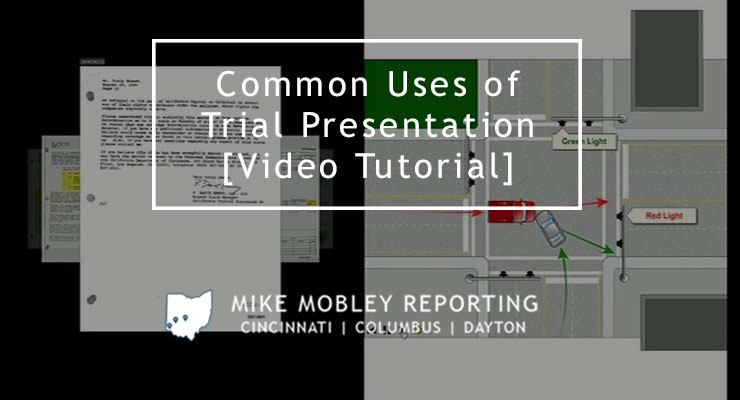Reliable Trial Presentations for Legal Teams and Law Firms.
Why Trial Presentations Are Important for Encouraging a Court
Test discussions play a pivotal role in the legal process, serving as an important system for encouraging jurors. By efficiently streamlining complicated legal ideas and including aesthetic help, attorneys can develop an interesting narrative that resonates on both intellectual and psychological levels. This calculated strategy not just improves jurors' understanding yet additionally promotes a deeper connection to the situation available. As we discover the numerous components that comprise an effective trial presentation, it ends up being obvious that the art of persuasion expands much past plain debates. What variables really elevate these presentations to their vital condition?
Significance of Visual Help
Aesthetic aids play an essential role in trial presentations, functioning as powerful tools to enhance jurors' understanding of complicated information. They can transform elaborate lawful ideas and valid data into quickly absorbable layouts, therefore boosting jurors' retention and understanding. In a courtroom setting, where attention periods may wane, aesthetic aids such as charts, charts, and timelines can properly catch and maintain passion.
Additionally, visual help aid in showing essential factors, making abstract ideas more concrete. For example, an infographic can succinctly summarize a series of occasions or partnerships, enabling jurors to visualize the proof presented. This aesthetic representation can connect gaps in comprehending that may develop from verbal explanations alone.
In addition, properly designed visual help lend credibility to the situation. They show the attorney's readiness and expertise, reflecting a thoughtful technique to advocacy. By offering a clear aesthetic context, lawyers can better say their position and convince jurors to straighten with their perspective.
Engaging Narration Strategies
An engaging story is necessary for effectively engaging a jury throughout trial presentations. Narration techniques can transform intricate legal arguments right into relatable and remarkable experiences for jurors. By constructing a clear and coherent narrative arc, attorneys can assist jurors via the facts, stressing key points that support their situation.
Using personalities, problem, and resolution within the narrative enables jurors to understand the people entailed, developing a sense of empathy and understanding. Trial Presentations. This human aspect can be specifically effective in developing the context of the instance, making the details extra absorbable
Including dazzling summaries and relevant narratives can better enhance the narrative, suggesting that resonates with jurors on a deeper degree. Lawyers need to concentrate on presenting the facts in a means that highlights the risks involved, fostering a sense of urgency and importance.
Additionally, pacing plays a crucial duty in narration; differing the tempo can maintain jurors' attention and stress defining moments in the event. In general, engaging narration methods function as a vital device for lawyers looking for to persuade juries and affect their decision-making process.
Emotional Connection With Jurors

To accomplish this link, attorneys can use dazzling storytelling, engaging visuals, and genuine testament article that highlight the human element of the instance. Concentrating on the real-life effects of the trial can assist jurors see past the legal lingo and appreciate the psychological stakes involved. Such techniques motivate jurors to empathize with the events involved, making them more probable to think about the emotional weight of the proof provided.
Moreover, constructing count on through genuineness and authenticity can also improve this emotional bond (Trial Presentations). When jurors really feel an individual connection to the instance, they are a lot more inclined to involve deeply with today debates, eventually making their deliberations more notified and impactful. Thus, promoting an emotional connection is not simply helpful; it is essential for reliable persuasion in the court
Simplifying Facility Information

Making use of visual aids, such as graphes and representations, can considerably enhance understanding by giving a concrete representation of abstract concepts. This strategy permits jurors to envision relationships and impacts, helping with better comprehension of the situation's subtleties. Breaking down details into smaller sized, digestible sectors helps keep jurors' focus and stops cognitive overload.
Employing simple language is just as vital. Lawful jargon or extremely technical terms can alienate jurors and obscure the core message. By making use of common language, attorneys produce a bridge to link with jurors, ensuring that the material of the debate is both relatable and unforgettable.
Ultimately, simplifying complicated details not just help jurors in comprehending the instance however also promotes a feeling of confidence in their capability to make an educated choice, which is important for attaining a favorable result.

Enhancing Retention and Remember
While jurors might realize complicated info throughout test discussions, boosting their retention and recall is equally important for making certain that vital arguments resonate long after the proceedings. Effective trial presentations utilize various strategies developed to strengthen the jurors' memory of critical realities and debates.
Aesthetic help, such as graphes, charts, and video clips, can substantially boost retention by involving several senses, thus producing stronger cognitive connections. Coupled with clear, concise stories, these devices assist strengthen the bottom lines, making them much more memorable. Rep of critical information throughout the presentation guarantees that essential arguments are not just comprehended but also implanted in the jurors' minds.
One more effective approach is making use of storytelling, which cultivates emotional involvement and aids in recall. By framing realities within a compelling story, attorneys can create a lasting impact that resonates past the courtroom.
Eventually, boosting retention and recall is important for convincing jurors, as it encourages them to bring the weight of the case's disagreement right into informative post considerations. A well-crafted discussion not only educates yet also makes sure that jurors keep in mind the important components required to reach a just choice.
Final Thought
In final thought, trial discussions play a crucial role in convincing courts by incorporating aesthetic help, involving narration, and emotional connections. Efficient discussions improve jurors' retention and recall of critical debates, ultimately influencing their deliberations.